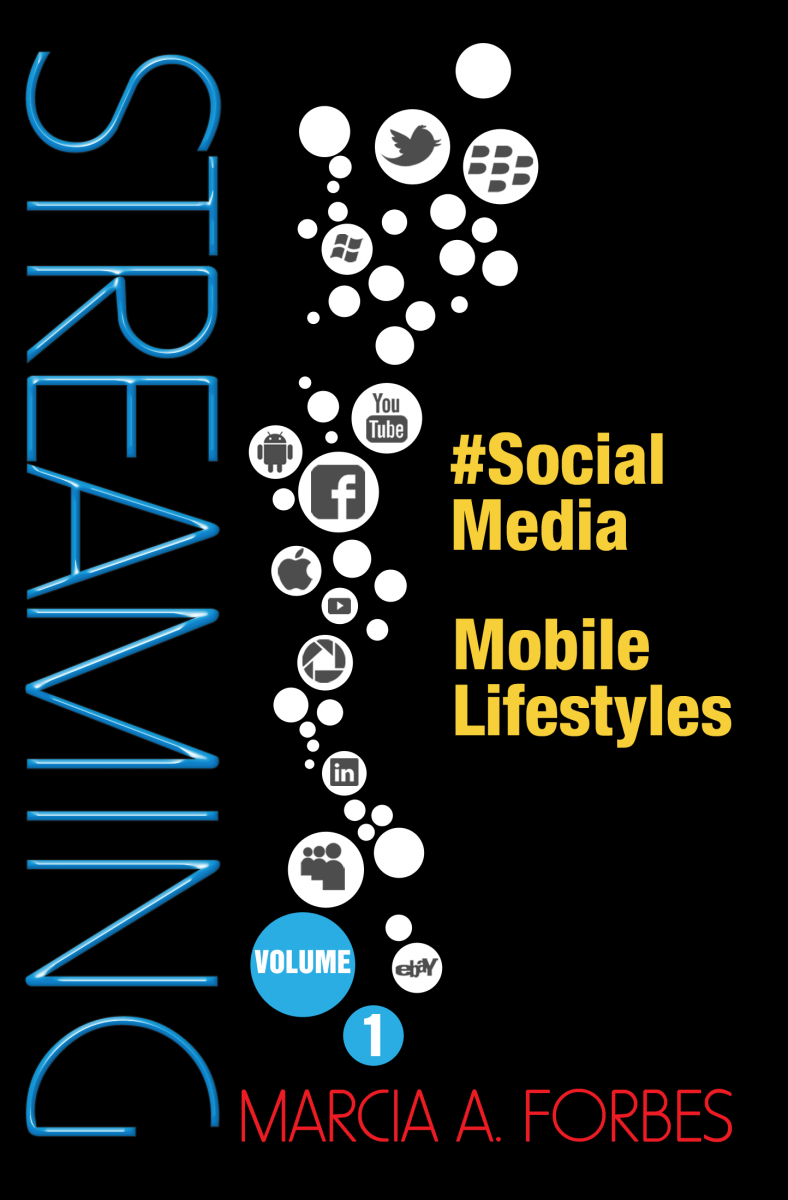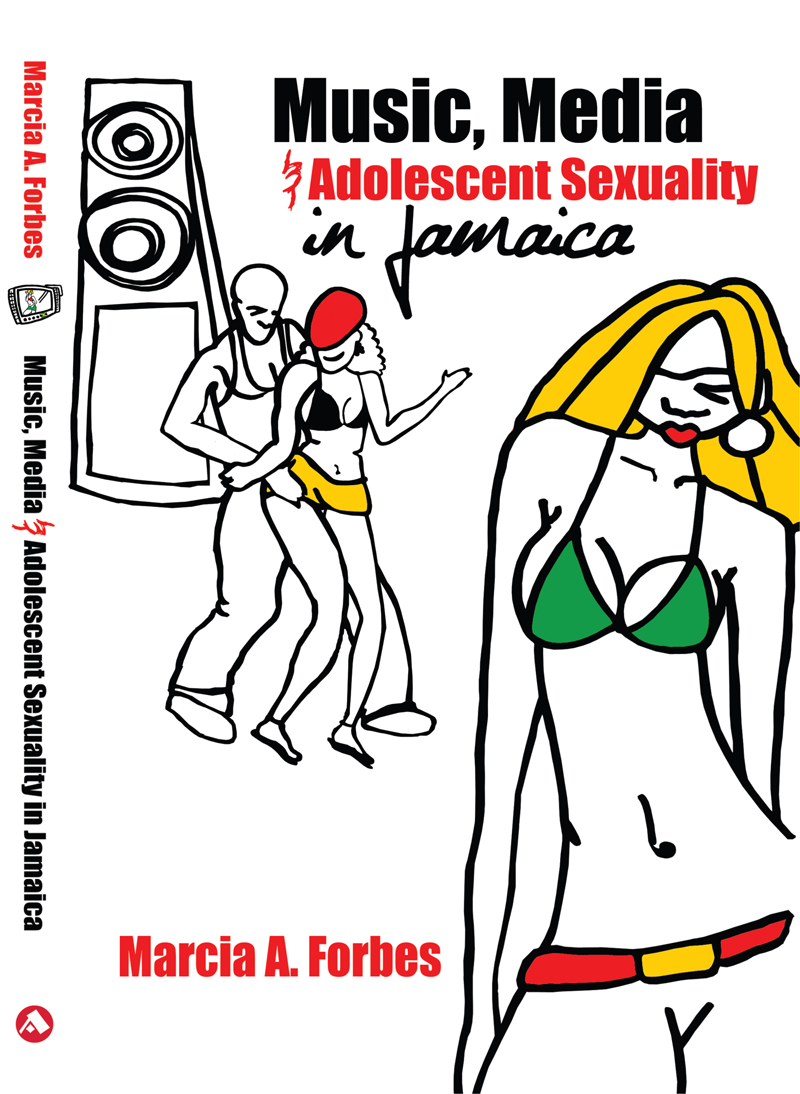In my quest to understand the relationships our young people have with TV and specifically with music videos, in the survey I asked them several questions pertaining to various aspects of watching TV as well as music videos. I was particularly interested in their opinions on some of the more contentious aspects of music video content e.g. the lifestyles frequently portrayed, male-female relationships, dress styles, dance styles and the appearance of the music video stars. As I analyze the data I have found questions of identity almost forcing themselves on me. You know the way authors sometimes say that the book wrote itself? Well my situation is not quite as fortunate, although I wish it were.
The questions from the data analysis are driving me to have to explore in depth areas that on starting the Ph.D. I had vowed to steer clear of. These include our colonial past and history of slavery as well as the controversies which surround Dancehall, its music, space and lifestyle. Anyway here I am some 2 years later having to confront these issues which are all integrally bundled with identity, as I try to make sense of our contemporary Jamaican society and the ways in which music infuses our entire being and reflects, in the words of so many writers, the rhythms of Africa and the melody of Europe. So far the research findings have been instructive.
Girls were asked if they would like to look like most of the women they see in their favourite music videos. Boys were asked a similar question but with reference to the men in their favourite videos. While pre-testing the questionnaire I had tried to ask both sexes the exact same questions, meaning they would have all been asked if they wanted to look like the music video women as well as the music video men. Well the boys would have none of it—“What Miss, if we waan look like de ooman dem? No Miss! Ah whah kine a questian dat Miss?” Giggles, giggles and snickering with numerous sotto voce—Ah B. Man business dat. So I left it alone. Can’t say I didn’t try.
The responses to their respective questions were very similar for girls and boys. Almost half of Jamaican adolescents want to look like the men and women they see in music videos. Girls were slightly more inclined to want to look like the women in music videos (46.4%) compared to boys who wanted to look like the men (43.8%). Interestingly though, while boys desired the look of the men in reggae music videos, it was the women in pop and hip hop videos which attracted the girls.
A full 100% of the girls who identified pop music videos as their # 1 choice among all genres wanted to look like the women in these videos, while almost two thirds (65%) of those who choose hip hop wanted to look like the women in those videos. Although overall dancehall music videos was the favourite genre among both male and female adolescents, fewer girls (about 40%) wanted to look like the women in dancehall music videos. The data shows a clear preference among Jamaican girls to want to look like the ‘foreign girls’. Since dancehall videos are indigenous to Jamaica and mainly produced here while pop and hip hop are mainly American and produced oversees, what is it about the girls in the foreign videos that our local girls find so appealing?

Based on several focus group discussions conducted with over eighty adolescents from six parishes, they like the hair, colour and other physical features of the women in these foreign videos. I remember one session where the girls compared Jamaican DJ Ce’Cile with US pop

star Beyonce and the way in which they labeled Ce’Cile a ‘skettel’. They said she couldn’t dance and her face was too broad. Beyonce in contrast was admired for her looks—her long hair and dancing skills. To my thinking both women were black but because Ce’Cile’s features were less European, she was seen as unattractive. Well especially since my face is even broader than Ce’Cile’s, you know I wouldn’t buy those arguments.
Seriously though, how does the desire to look like the people they see in foreign music videos tie in with female adolescents’ perceptions of themselves and their Jamaican identity? Is there a conflict between how they see themselves versus how they really want to be? Is it that they are rejecting their Jamaican identity or is this desire tied up with issues of marginality and the girl’s recognition that by dressing up and looking like a ‘million dollars’, the way the girls in the American videos usually look, they are more likely to get ahead in Jamaica’s materialistic society? Why should it be unusual then for Jamaican adolescent girls to want to imitate a look that they perceive will help them to get ahead in life?
At an academic conference I recently attended, Winnifred Brown-Glaude, a Jamaican at Rutgers University, presented an insightful paper on skin bleaching in Jamaica. In it she argued that by bleaching his/her skin the individual attempts to renegotiate his/her hierarchical position in Jamaican society and to realign the power relations which allow those of lighter hue easier access to power. So rather than viewing the person who bleaches as suffering from some kind of self-hate or as being deviant, as has been the received thinking, she frames the phenomenon of bleaching as a challenge to the status quo.
Brown-Glaude strengthened her argument by juxtaposing the practice of sun-tanning with that of skin bleaching. While tanning has been positively positioned (a status symbol frequently associated with images of rich tourists in the South of France or the Caribbean), bleaching has been positioned within the discourse of mental illness and as a social aberration, a deviation from the norm.
Let me examine the responses to another contentious area of music video portrayals. The questions, “Would you like to have a lifestyle like most of the women you see in your favourite music videos?” as well as, “Would you like to have a lifestyle like most of the men you see in your favourite music videos?” were asked of all the survey participants. So girls and boys got asked if they would like the male lifestyle in music videos and girls and boys also got asked if they would like the lifestyle of the females they saw in music videos. Yes, I did manage to get away with that one. It seems the boys could handle a question about wanting the music video lifestyle of females because unlike the one about wanting to look like the female in music videos no sparks flew when the questionnaire was pre-tested.
Adolescents were almost equally split in their desire or lack of desire for the music video lifestyle portrayed by the men. Almost half of them (46%) wanted a lifestyle similar to most of the men they saw in music videos. Breakout of this group along gender lines showed that overall almost two-thirds (62%) of male adolescents wanted the lifestyle of the music video men compared to 30% of females who desired this lifestyle.
What is it about the male lifestyle portrayed in music videos that so many girls, almost one-third, find so attractive? Many girls in the focus group sessions complained about the fact that so many videos feature men with numerous women fawning over them.
“Artistes, even age old artistes, can get almost every girl they want…”
“They are just there to show off their bodies and make the man look
Like he’s king.”
And we are all familiar with the lyrics—trailer load of girls, ‘gall’ in a bundle, man fe have nuff ‘gall’—which support and endorse this behaviour. As one middle-adolescent, inner-city girl noted, almost with resignation, “Dem say man have more things than ‘ooman.” Is it this desire for the power and the material wealth displayed by many men in many music videos which so many of our girls find so alluring?
What of the lifestyle of females in music videos, are the girls equally drawn to this? Jamaican adolescent girls were exactly evenly split (50%/50%) in their opinions as to whether or not they would like to have a lifestyle similar to the women in their favourite music videos. Interesting isn’t it, as high as 30% desired the lifestyle of music video men compared to 50% who desired that of music video women.
The female adolescents who desired the lifestyle of music video men were cross-referenced with those who desired that of music video women. Almost three-

quarters of them (72%) desired the lifestyle of both the men and the women in music videos. This finding suggests a desire for the music video lifestyle per se, whether portrayed by men or by women. This lifestyle is generally viewed as replete with sexual images, consumerism and conspicuous consumption, ´a la the American culture.
So the allure of the American dream, the modern day version, continues even among those who remain firmly planted on the rock. Our girls want to look like pop and hip hop stars and their back-ups in music videos in preference over our home-grown dancehall divas. Weh mek we love farin soh?
 Based on several focus group discussions conducted with over eighty adolescents from six parishes, they like the hair, colour and other physical features of the women in these foreign videos. I remember one session where the girls compared Jamaican DJ Ce’Cile with US pop
Based on several focus group discussions conducted with over eighty adolescents from six parishes, they like the hair, colour and other physical features of the women in these foreign videos. I remember one session where the girls compared Jamaican DJ Ce’Cile with US pop star Beyonce and the way in which they labeled Ce’Cile a ‘skettel’. They said she couldn’t dance and her face was too broad. Beyonce in contrast was admired for her looks—her long hair and dancing skills. To my thinking both women were black but because Ce’Cile’s features were less European, she was seen as unattractive. Well especially since my face is even broader than Ce’Cile’s, you know I wouldn’t buy those arguments.
star Beyonce and the way in which they labeled Ce’Cile a ‘skettel’. They said she couldn’t dance and her face was too broad. Beyonce in contrast was admired for her looks—her long hair and dancing skills. To my thinking both women were black but because Ce’Cile’s features were less European, she was seen as unattractive. Well especially since my face is even broader than Ce’Cile’s, you know I wouldn’t buy those arguments. quarters of them (72%) desired the lifestyle of both the men and the women in music videos. This finding suggests a desire for the music video lifestyle per se, whether portrayed by men or by women. This lifestyle is generally viewed as replete with sexual images, consumerism and conspicuous consumption, ´a la the American culture.
quarters of them (72%) desired the lifestyle of both the men and the women in music videos. This finding suggests a desire for the music video lifestyle per se, whether portrayed by men or by women. This lifestyle is generally viewed as replete with sexual images, consumerism and conspicuous consumption, ´a la the American culture. 

